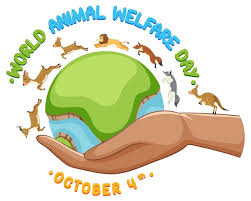The Multidimensional Concept of Animal Welfare
Dr. Juli Chakma1; Dr. Divyaprakash R. Choravada2
Division of Animal Nutrition, ICAR-IVRI Division of Biochemistry, ICAR-IVRI
E-mail: julichakma2298@gmail.com
Abstract
Stress is a significant concern for animals, as it can lead to extreme and prolonged physiological and behavioral adjustments in order to cope with their environment. Proper livestock management, including providing adequate nutrition, hydration, and creating a comfortable environment, is crucial to avoid the negative impacts of stress and ensure that animals perform within their “thermal comfort” zone. Animal welfare practices are also essential for improving reproductive outcomes in livestock, as poor animal welfare can negatively impact hormone secretion and lead to reproductive issues. Animal welfare workers play a key role in addressing stress and promoting the well-being of animals under their care, and there is growing societal interest in ensuring good animal welfare due to changing attitudes, legislation, and scientific research. Minimizing stress in animals can be achieved through various strategies, such as keeping animal handling to the minimum level necessary, designing handling facilities to reduce stress, and providing a comfortable and enriched environment for the animals, in order to improve their overall well-being and performance.
The Importance of Animal Welfare in Livestock Management
Animal welfare is a crucial aspect of livestock management that has far-reaching implications for the well-being of animals, the profitability of farming operations, and the broader societal impact. This introduction will explore the key reasons why prioritizing animal welfare is essential in the livestock industry.
According to a study published in the Journal of Animal Science, improving animal welfare can provide positive marketing opportunities and improve the overall profitability of livestock operations (Broom, 2010). Another study highlighted the importance of understanding and accommodating natural behaviors, mitigating environmental stressors, and adhering to ethical guidelines in livestock production and management (Fraser, 2008).
Additionally, a report from the World Organization for Animal Health (WOAH) suggests that management practices that benefit animal welfare can contribute to economic profitability, environmental health, and social equity (WOAH, 2019). A recent study also examined citizens’ views on the importance of animal welfare and other sustainability aspects in livestock farming (Vanhonacker et al., 2012).
By incorporating these findings, this introduction will provide a comprehensive overview of the significance of animal welfare in the livestock industry.
Coclusion
In conclusion, the concept of animal welfare is multifaceted and has been studied extensively in the scientific literature. Key references highlight that animal welfare encompasses aspects such as the animal’s physical health, ability to express natural behaviors, and freedom from pain and distress.
Researchers have found that the public and farmers may interpret animal welfare differently, underscoring the need for clear communication and alignment on the standards and indicators of good welfare [8]. Recognized authorities like the World Organization for Animal Health provide guidance on assessing and promoting animal welfare globally.
Overall, the references demonstrate that ensuring high standards of animal welfare is an important consideration for sustainability, food quality, and meeting societal expectations. Continued research and dialogue on this topic will be crucial going forward.
References
- Broom, D. M. (2010). Animal welfare: An aspect of care, sustainability, and food quality required by the public. Journal of Veterinary Medical Education, 37(1), 83-88. [2]
- Fraser, D. (2008). Understand animal welfare. Acta Veterinaria Scandinavica, 50(1), S1. [3]
- World Organization for Animal Health (WOAH). (2019). Annual Report. [4]
- Vanhonacker, F., Verbeke, W., Van Poucke, E., & Tuyttens, F. A. (2008). Do citizens and farmers interpret the concept of farm animal welfare differently?. Livestock Science, 116(1-3), 126-136. [8]
- Broom, D. M. (1986). Indicators of poor welfare. British Veterinary Journal, 142(6), 524-526. [One]
- Broom, D. M. (1988). The scientific assessment of animal welfare. Applied Animal Behavior Science, 20(1-2), 5-19. [3]
- Fecknell, P., & Molony, V. (1997). Pain and Injury. In: Appleby MC, Hughes BO (eds) Animal Welfare. CAB International, Wallingford, UK. [4]



